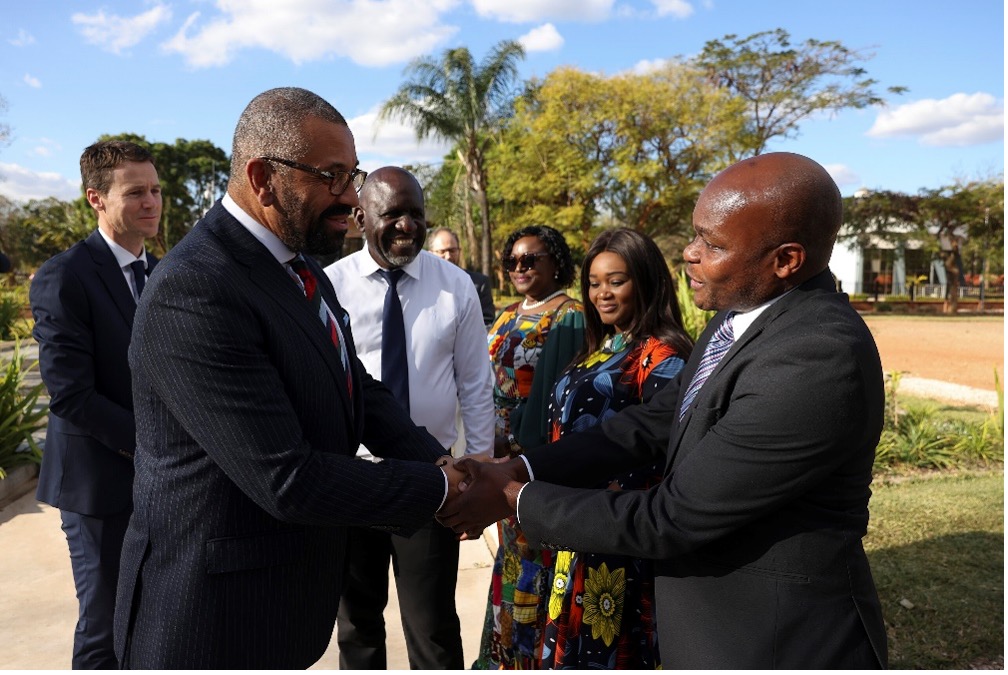ARCM and TYM shares remain in my portfolio despite weak investor sentiment. Here’s why.
In late April 2023, I covered and took out positions in both ARC Minerals and Tertiary Minerals — though ARC Minerals was the larger position of the two, given the prospectivity of its assets and larger market capitalisation.
You can find the original articles here — ARCM & TYM — worth a quick readthrough to bring you up to speed as the licences themselves have not changed.
Since then, both companies have fallen in value — though both have also made recoveries in recent weeks. As a conviction investor, I’ve been buying into the weakness. There isn’t enough copper to go around and both companies have advanced their business cases over the past few months.
Of course, I’m always trying to buy shares at the lowest point possible. In this case, I was too early, but in my defence it’s hard to see how ARCM and TYM are lower now than what they were in April when considered from an intrinsic perspective.
However, extrinsic factors are weighing on the shares. The copper price continues to fall on technical weakness despite the inevitable long-term supply gap — and investor sentiment is at rock bottom.
Second is the mining sector problem. Just from the top of my head, you have the Premier African Minerals production delay, the Horizonte Minerals share price crash, and the Kodal Minerals contract hold-up. Then there’s the Greatland Gold share price correction — arguably the most popular AIM mining share over the past few years — it’s dropped below 6p.
I won’t talk about the VAST diamonds, probably a sore point.
But the issue now is that small cap mining stocks need to continually raise cash to finance operations, and usually from share placings. Investors know this, so sell off in advance of a placing, creating a self-fulfilling negative feedback loop. Naturally, this has been the case since the AIM market was a twinkle in LSEG’s eye.
But the bigger problem is that the market has become a trader’s fever dream. Only a year or two ago, extremely positive news could send a stock sustainably higher, creating a base from which to raise cash. In 2023, a great RNS is met with a short spike followed by selling back to the starting point.
However, I do feel that with the AIM market below 700 points, having more than halved since September 2021 — and close to its 20 March 2023 pandemic low — small caps as a whole have corrected to fair value. And further to this, there comes a point where single mining stocks become undervalued purely based on the assets on the books.
What’s needed to jump-start the sector is significant success with one popular stock. Where HZM dragged down the wider market, one catalytic piece of news at one of the popular companies will propel the rest upwards.
And to ARCM and TYM:
Macro factors to consider
In early August, UK foreign secretary James Cleverly enjoyed a four-day tour of Zambia — and not just for a holiday. The purpose of the visit, which included visiting a copper mine in the country, was to sign a Memorandum of Understanding on critical minerals to ‘lay the foundation for further UK support for the responsible mining of copper, cobalt and other metals essential to the global clean energy transition.’

In addition, the agreed Green Growth Compact is aimed at generating £2.5 billion of UK private sector investment and £500 million government investments into Zambia’s mining sector. Cleverly enthused that ‘the UK-Zambia Green Growth Compact and our landmark agreement on critical minerals will support investment between UK and Zambian business, creating jobs in both countries.’
For those concerned about the policies of the next government, Labour has made clear it will reinstate the UK 2030 EV commitment, with Shadow Chancellor Rachel Reeves advising that it’s ‘weird’ we don’t have our own version of the US Inflation Reduction Act.
With President Hichilema rejecting his predecessor’s resource nationalism, it’s clear that there is a significant opportunity here. Prior to his election victory in August 2021, the Zambian government had effectively destroyed its own mining industry through a series of fiscal blunders. It increased royalties for the tenth time in 16 years, made royalty payments non-deductible from corporation tax (double taxation), scrapped value-tax refunds, and created a 5% import levy.
Together, these policies saw international businesses withdraw $650 million of investment in 2019, and Zambia saw the loss of even more investment through major divestment. As Zambia relies on copper for 75% of its export revenue (read dollar income), these huge production cuts tanked the economy and the country defaulted.
Hichilema wants to expand copper production from 800,000 tonnes per year to 3 million tonnes per year, over the pace of just a decade. He’s rebalanced the tax base, and even signed a MoU with DROC for critical minerals and the EV sector. Zambia is already the second-largest copper producer in Africa — and arguably has a clear jurisdictional advantage over top producer DROC.
Beyond this, the copper supply gap has been reaffirmed once more by all the world’s largest copper producers — I’ve done my own coverage on this before, but when the Financial Times is effectively ringing a giant red bell for more copper and all the CEOs are saying there simply aren’t enough mines for future demand…
Zambia copper mining investment is also on the rise. Sibanye Stillwater’s CEO is on the record saying that the amount of money needed to acquire and expand Mopani Copper Mines would not be ‘onerous.’
Barrick Gold is now planning to invest almost $2 billion at Lumwana to massively increase both production and mine life. First Quantum Minerals is investing $2.1 billion in First Sentinel Copper Mine and $1.25 billion into its Kansanshi coper mine. Overall — when you include Chinese investment — over $10 billion of investment into mining targeted mostly at copper is ongoing.
Why does this matter? Two key reasons:
- Confidence — if both western and Chinese companies are investing heavily in Zambia, it signifies confidence in the jurisdiction and in the long-term gains to be made in its coper mines. As a caveat, much of this increased investment is arguably delayed from prior years where there was an unfavourable investing environment.
- Capex costs — the ARCM and TYM licences are almost all very close to current operations, which already boast significant mining plants with excess capacity. Majors looking to expand LOM and/or production can do this cheaply by simply buying claims adjacent to current mines where mineralisation is proven. For juniors there is of course a risk that they will drill and find nothing, but majors don’t commit to JVs without cause.
ARCM & TYM: key catalysts
ARCM shares have risen by a third in just five days, and there’s a reason why. Chair Nick von Schirnding — who I interviewed in April — is on the ground in Zambia. And the Zambian Minister of Mines and Minerals, Paul Kabuswe, let slip that he was ‘just signing the transfers’ in early September.
As a reminder, ARCM’s assets were previously explored through an Equinox Minerals and Anglo American Joint Venture during the late 1990s as part of the Kabompo Project. ARCM’s areas under license encompass nine of 30 exploration ranked targets, including the top seven ranked targets.
This matters because FQM’s Sentinel copper mine — which produces over 250,000 tonnes of copper per year — was originally ranked number 22 of the original 30 targets. At the time, it had an exploration target size of six million tonnes of ore, but this was eventually upgraded to a gigantic one billion tonnes.
The speculation is that the JV has found significant copper mineralisation, and all that’s left before the catalyst is let out of the bag is for everybody to dot the I’s and cross the T’s.
That’s the theory — but this is still exploratory mining.
TYM is much earlier on in its story, but then the microcap company is a much smaller proposition. Like ARCM, its local partner Mwashia has also managed to get into a non-binding earn-in and JV to explore Konkola West with a third party, only described as ‘a well-resourced mineral exploration and mining company.’
The proposed term sheet proposes that this third party will commit in Stage 1 to a drill programme to be completed within 14 months of signing the EIJV agreement, whereupon it will earn an initial 51% interest in the licence (39% Tertiary and 10% Mwashia). It will then have the option to earn 70% in Stage 2 (20% Tertiary and 10% Mwashia) by funding a cumulative $6 million on exploration within 48 months of signing the EIJV Agreement.
For clarity, Konkola West is just 2,000 metres from the Mingomba Copper Deposit, and is targeting deep down-dip extensions of the contiguous Musoshi-Lubambe-Mingomba-Konkola copper deposits which host the Musoshi Mine in the Democratic Republic of the Congo and the Lubambe Mine and Konkola mines and concentrators in Zambia.
In my view, this isn’t even the top target — TYM’s Mukai project is adjacent to Sentinel and ARCM’s claims — and this project has a standing technical cooperation and data sharing agreement with FQM — which has already discovered copper and nickel at the adjacent Tirosa prospect.
TYM shares remain speculative, but ARCM could be on the verge of its inflection point.
But remember, this is still FTSE AIM.
This article has been prepared for information purposes only by Charles Archer. It does not constitute advice, and no party accepts any liability for either accuracy or for investing decisions made using the information provided.
Further, it is not intended for distribution to, or use by, any person in any country or jurisdiction where such distribution or use would be contrary to local law or regulation.

